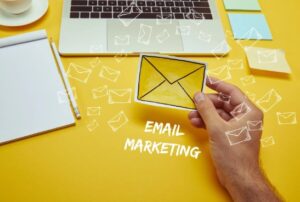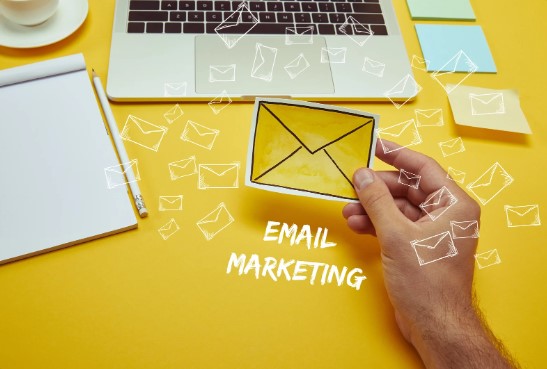 Email marketing is a powerful tool that can help businesses of all sizes grow their customer base, increase brand awareness, and drive more revenue. However, simply sending out emails is not enough. To truly harness the potential of email marketing, you need to understand the best practices, strategies, and tactics that can make your campaigns successful. In this article, we will explore how to get email marketing to work for your business.
Email marketing is a powerful tool that can help businesses of all sizes grow their customer base, increase brand awareness, and drive more revenue. However, simply sending out emails is not enough. To truly harness the potential of email marketing, you need to understand the best practices, strategies, and tactics that can make your campaigns successful. In this article, we will explore how to get email marketing to work for your business.
I. Building a Strong Foundation
1. Define Your Goals: Before diving into email marketing, it’s crucial to identify your goals. Are you looking to increase sales, promote a new product, or build customer loyalty? Clearly defining your objectives will help shape the content and structure of your email campaigns.
2. Grow Your Email List: Building a quality email list is the foundation of successful email marketing. Implement strategies such as pop-up forms, lead magnets, and social media promotions to encourage visitors to opt-in to your mailing list.
3. Segment Your Audience: Not all subscribers are the same. Segmenting your audience based on demographics, preferences, or purchase history allows you to send targeted, relevant content that resonates with each group.
II. Crafting Compelling Emails
1. Attention-Grabbing Subject Lines: The subject line is your first impression. Create curiosity, urgency, or offer value to entice subscribers to open your emails. Experiment with different subject lines and analyze their performance to optimize open rates.
2. Engaging Content: Keep your emails concise, easy to read, and visually appealing. Use a conversational tone, personalize whenever possible, and focus on providing value to your subscribers. Include compelling visuals, videos, or GIFs to capture attention.
3. Call-to-Action (CTA): Clearly define the next step you want your subscribers to take. Whether it’s making a purchase, signing up for a webinar, or downloading an e-book, a strong CTA can significantly impact your conversion rates. Make sure your CTA is prominent and stands out.
III. Nurturing and Automating Campaigns
1. Welcome Emails: Immediately engage new subscribers with a well-crafted welcome email series. Share valuable content, introduce your brand, and set expectations for future communication. This helps build trust and establishes a positive relationship from the start.
2. Behavioral Triggers: Automating emails based on user behavior (e.g., abandoned cart, browsing history) allows you to send timely and relevant messages that drive conversions. Use marketing automation tools to set up these triggers and personalize the content.
3. A/B Testing: Continuously experiment with different elements of your emails, such as headlines, visuals, CTAs, and send times. A/B testing helps you optimize your campaigns and understand what resonates best with your audience.
IV. Analyzing and Optimizing Results
1. Track Key Metrics: Monitor open rates, click-through rates, conversion rates, and unsubscribe rates to gauge the effectiveness of your campaigns. Use email marketing analytics tools to gain insights and identify areas for improvement.
2. Refine Your Strategy: Analyze the data to understand what works and what doesn’t. Adjust your content, frequency, and targeting based on your findings. Continuously strive to improve your email marketing efforts.
Once you have implemented your email marketing campaign, it is essential to refine your strategy to ensure its effectiveness. This involves analyzing the data obtained from your campaign to gain insights into what works and what doesn’t. By understanding the preferences and behaviors of your audience, you can make informed decisions on how to improve your email marketing efforts.
One way to refine your strategy is by adjusting your content based on the data analysis. Take a look at the open rates, click-through rates, and conversion rates of your emails. Identify which types of content resonate well with your audience and which ones are not generating the desired results. For example, if you notice that emails with product promotions have higher open rates compared to newsletters, you may want to focus more on promotional content in your future emails.
Frequency is another aspect that can be refined based on the data analysis. Pay attention to the unsubscribe rates and engagement metrics to determine if you are sending too many or too few emails. For instance, if you observe a high unsubscribe rate after increasing the frequency of your emails, it may be a sign that you are overwhelming your subscribers. On the other hand, if you notice a decline in engagement after reducing the frequency, you may need to increase the number of emails to maintain interest and keep your audience engaged.
Targeting is also an important factor to consider when refining your email marketing strategy. Look at the segmentation and personalization data to understand if you are effectively reaching the right audience with your emails. For example, if you have segmented your subscribers based on their interests and preferences, analyze if the content you are sending to each segment is relevant and tailored to their needs. By ensuring that your emails are targeted to the right audience, you can increase engagement and improve the overall effectiveness of your campaign.
It is important to note that refining your strategy is an ongoing process. As you gain more data and insights, continue to make adjustments and improvements to your email marketing efforts. By constantly striving to refine your strategy, you can optimize the effectiveness of your emails and achieve better results in terms of open rates, click-through rates, and conversions. Remember, the key is to use the data to inform your decisions and continuously test and iterate to find the best approach for your target audience.
3. Maintain Compliance: It is crucial to ensure that your email campaigns adhere to applicable regulations, such as GDPR and CAN-SPAM. Take the necessary steps to obtain consent from your recipients, offer readily visible options to unsubscribe, and always prioritize the privacy of your subscribers.
Conclusion
Effective email marketing requires careful planning, strategic execution, and continuous optimization. By following the steps outlined in this guide, you’ll be well on your way to leveraging email marketing to its full potential. Remember to always prioritize providing value to your subscribers and maintain a consistent and engaging communication strategy. With time and effort, you’ll see your email marketing efforts bear fruit, driving sustained growth and success for your business.
